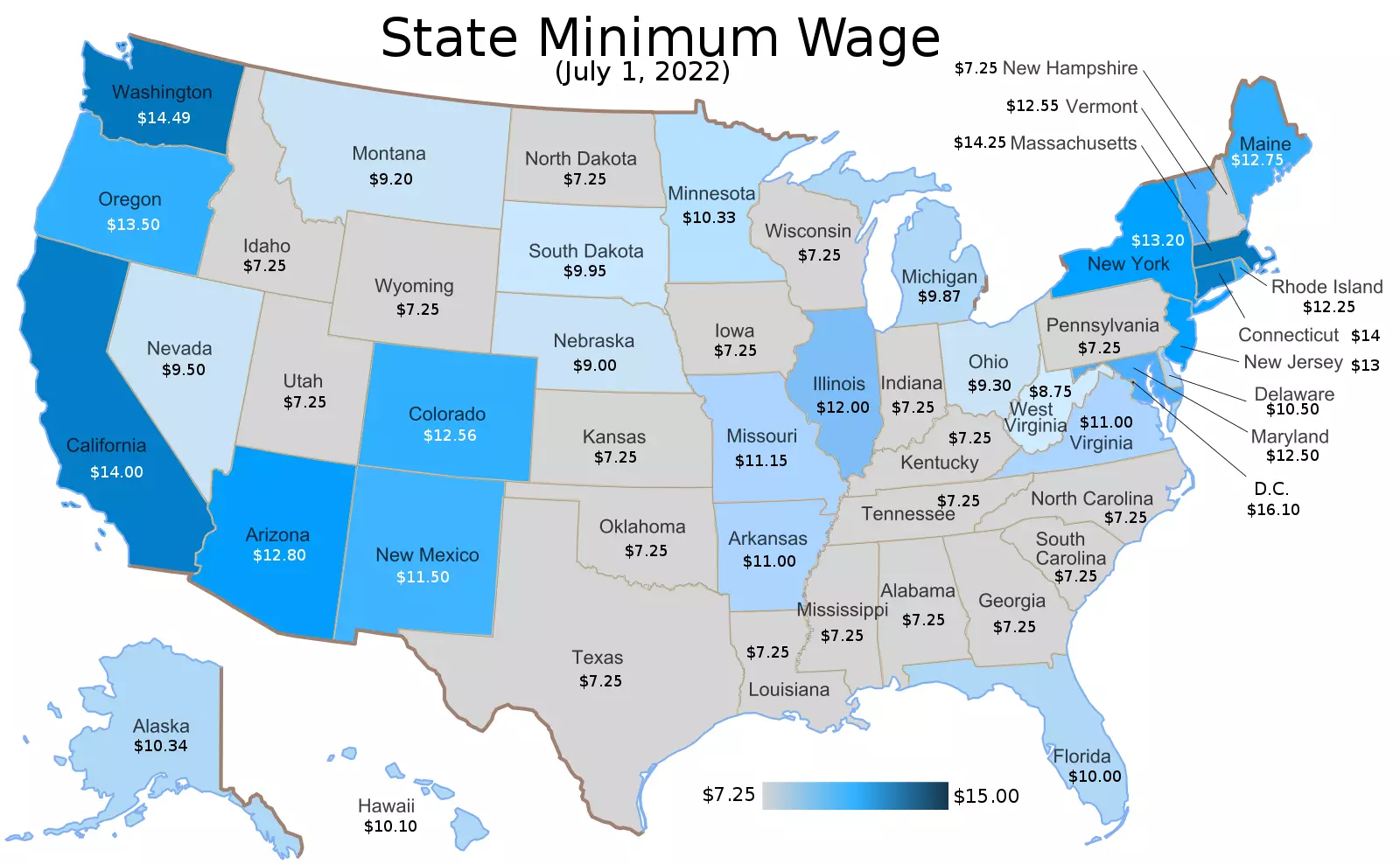Comments
- No comments found

There are several states and cities in the US where the minimum wage rates just went up.
This is good news for workers amid inflation and supply shortages.
The main question is: What is a good minimum wage rate for great economic output, supply surplus and massive productivity?
The supply disruptions of the pandemic and the continuing issues including the war, state that how a country or an economy will sustain a steady amount of supply is vital across consumer items and processed materials.
There are places where they have certain kinds of working situations that do not apply, but the curiosity is how will labor flexibility fit into objectives for progress for a society.
The minimum wage is important to gainful employment and fairness but has its disadvantages. It is possible to achieve minimum wage somewhere and it takes some kinds of jobs away because there are lower rates elsewhere.
What might be possible to soup around options, so that productivity is possible?
There are employment models including of tier where some are hired permanently and some on contract paying one lower than others. That is not new.
But there is a possibility to have new strata on three different tiers for the same role in the same shift where people are hired on different experience and pay structure.
The first tier could be the most experienced. The second, intermediate and the last unskilled for the role. The unskilled one will be hired to work for 2 hours per stretch but will agree to be paid lower than the minimum wage.

The purpose is to have an abundant amount of labor on this lower tier thrown at some production or service processes, to ensure that supply is possible locally, without offshoring jobs.
Paying for lower than minimum wage rates may seem unfair, but 2 hours for work that is spread with others, where process knowledge is acquired, where there is possibility to have cheaper stuff locally and there is also the chance to lower stress and risk, or have something.
The lower tier may not apply to certain people in the labor force but would apply to others.
Labor should not be in short supply with the supply problems of inflation.
It is important to seek out new directions in labor economics for advantage against recession and hyperinflation.
There are suggestions for unemployment to cure inflation.
There are also moves to hike interest rates to taper inflation, but what is important is supply and why not take on the problem directly if maneuvers can be worked out, for labor.
Leave your comments
Post comment as a guest